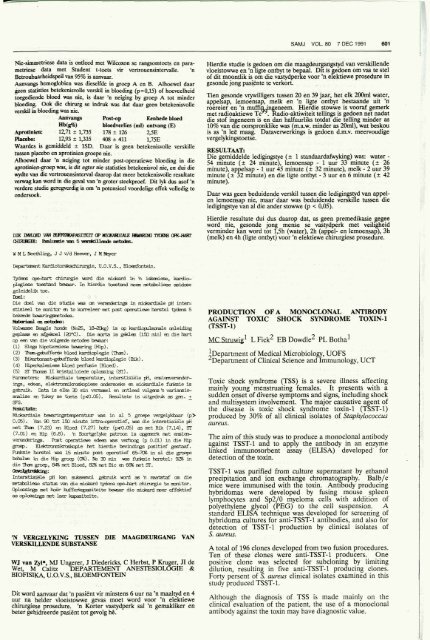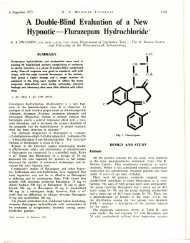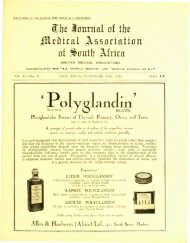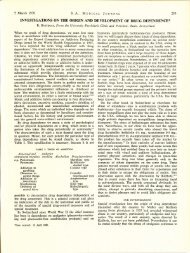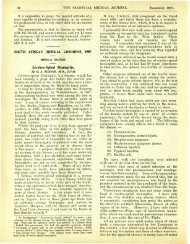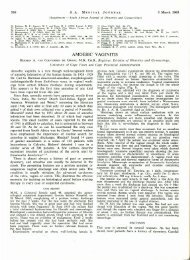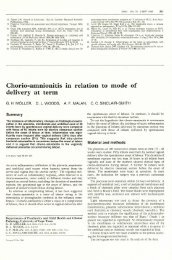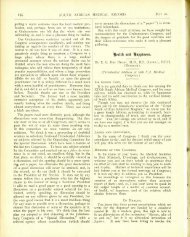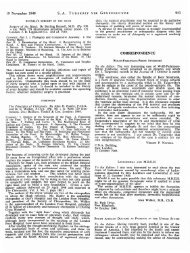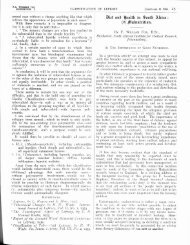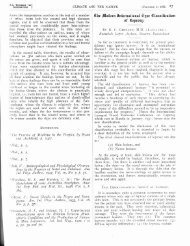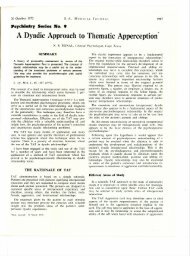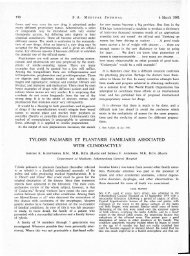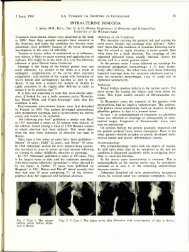Universiteit van die Oranje-Vrystaat - SAMJ Archive Browser
Universiteit van die Oranje-Vrystaat - SAMJ Archive Browser
Universiteit van die Oranje-Vrystaat - SAMJ Archive Browser
Create successful ePaper yourself
Turn your PDF publications into a flip-book with our unique Google optimized e-Paper software.
%I VEBGELYKING TUSSEN DIE MAAGDEURGANG VAN<br />
VEBSKKLEMlE SUBSPANSE<br />
SAW VOL (W 7 DEC I991 6Ol<br />
RESUCTAA'E<br />
Die gemiddelde l (f 1 standaardafwyking)m: am-<br />
54 minute (-c 24 mnrute lemoemap - l uur 33 minute (k 26<br />
minute), aqelpg - l usm 45 &ute (f 32 minute), oolk - 2 urn 39<br />
minute (a 2 mulute) en <strong>die</strong> ligte ontbyt - 3 uur en 6 minute (+ 42<br />
minute).<br />
Daar was geen beduideneje vesldl ~ t n<br />
appelen<br />
lemmmp nie, roaarroaar daat tussen <strong>die</strong><br />
kQ&stp <strong>van</strong> ai <strong>die</strong> ander stowwe (p < 0,05).<br />
PRODUCTION OFA MONOCLONAL ANTIBODY<br />
AGAINST Tome SHOCK -ROME TOXIN-1<br />
(TSST-1)<br />
~~~truwi~l L El3 Dowdle2 PL Bothal<br />
'Department of Medical Microbiology, UOFS<br />
2~epartment of Qinical Science and Immunology, UCT<br />
Toxic shock syndrome ('ES) is a severe illness affecting<br />
mainly young menstruating females. It presents with a<br />
sudden onset of diverse symptoms and signs, including shock<br />
and multisystem involvement. The major causative agent of<br />
the disease is toxic shock syndrome toxin-l (TSST-l)<br />
produced by 30% of all clinical isolates of Stuphylococcus<br />
aureus.<br />
P<br />
The aim of this study was to roduce a monodonal antibody<br />
against TSST-1 and to app y the antibody in an enzyme<br />
linked immunosorbent assay (=SA) developed' for<br />
detection d the toxin.<br />
TSST-1 was purified from culture supematant by ethanol<br />
precipitation and ion exchange chromtoj$raphy. Balb/c<br />
mice were immmised with the toxin. AnQbody producing<br />
hybridomas were developed by fusing mouse spleen<br />
lymphocytes and Sp2/0 myelorna cells with addition of<br />
polyethylene glycol (PEG) to the cell suspe11sion. A<br />
standard EUSA technique was developed for screening of<br />
hybridoma cultures for anti-TSST-l antibo<strong>die</strong>s, and also for<br />
detection of TSST-1 production by clinical isolates of<br />
Swells<br />
A total of 1% clones developed from two fusion procedures.<br />
Ten of these clones were anti-TSST-l producers. One<br />
positive clone was selected for subclonin by limiting<br />
d<br />
dilution, resulting in five anti-TSST-l pr ucing clones.<br />
Forty persent of S. mrem clinical isolates examined in this<br />
study produced TSST-1.<br />
Although the diagnosis of.TSS is made mainly on the<br />
clinical evaluation of the patient, the use of a monoclonal<br />
antibody against the toxin my have diagnostic v ah~


